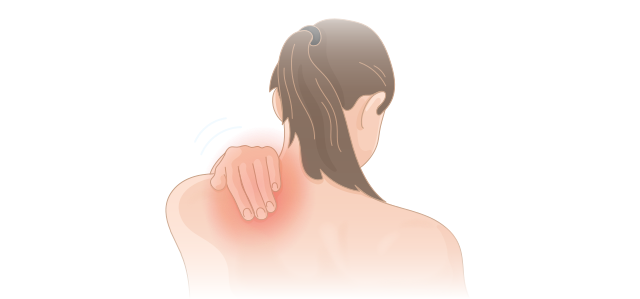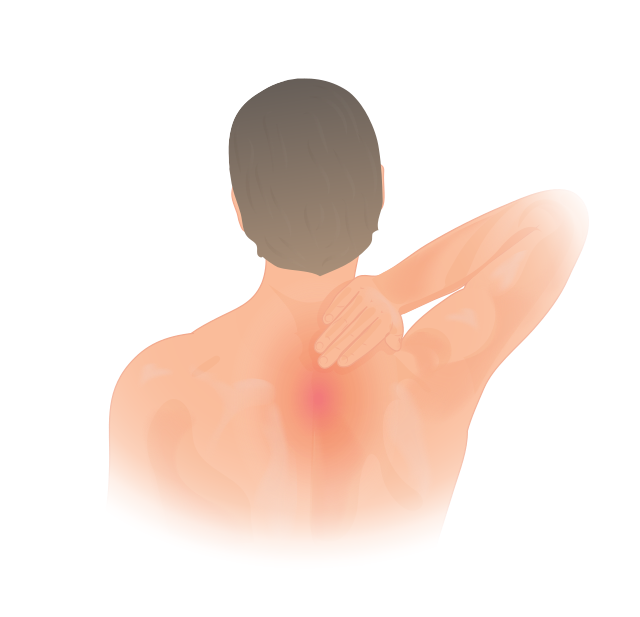Upper back pain when breathing in is a common and distressing issue that affects countless individuals. It can disrupt daily activities, limit mobility, and have a significant impact on overall quality of life. If you are experiencing this discomfort, you are not alone. In this comprehensive guide, we will delve deep into the causes, symptoms, and effective relief methods for this condition. Our goal is to provide you with valuable insights and strategies to effectively manage the pain, find relief, and regain control of your life.
Overview of Upper Back Pain When Breathing In
Upper back pain when inhaling should not be overlooked, as it can have a profound impact on your well-being. This condition can be triggered or worsened by various activities or conditions, such as lifting heavy objects, repetitive motions, poor posture, or even respiratory issues.
It is essential to understand the significance of obtaining a proper diagnosis and appropriate treatment to prevent potential long-term complications. By seeking medical attention, you can receive the necessary guidance and support to identify the underlying causes of your upper back pain and explore effective strategies to manage and alleviate the discomfort.
Causes of Upper Back Pain When Inhaling
Several factors contribute to upper back pain when breathing in. Let’s explore the most common ones:
- Muscular strain and tension: Overuse, sudden movements, or poor posture can lead to muscular strain and tension in the upper back, resulting in pain when taking deep breaths.
- Respiratory conditions: Certain respiratory conditions, such as pneumonia, pleurisy, or bronchitis, can cause inflammation in the lining of the lungs or chest wall, leading to upper back pain when breathing deeply.
- Spinal issues: Herniated discs, degenerative disc disease, or spinal misalignment can put pressure on the nerves in the upper back, causing pain that intensifies with breathing.
- Anxiety and stress: Anxiety and stress can contribute to muscle tension and shallow breathing patterns, which may result in upper back pain when breathing in.
- Posture-related issues: Poor posture, especially when sitting or standing for extended periods, can strain the muscles and ligaments in the upper back, leading to pain during inhalation.

Symptoms and Diagnosis
The symptoms associated with upper back pain when breathing in can vary from person to person. Understanding these symptoms is crucial for accurate diagnosis and effective treatment. Here are some common indicators:
- Types of pain: Upper back pain when breathing in can present as sharp, dull, stabbing, or aching sensations.
- Additional symptoms: Some individuals may experience difficulty breathing, chest pain, shoulder pain, or a feeling of tightness in the upper back along with the pain during inhalation.
Seeking medical evaluation is essential for an accurate diagnosis and appropriate treatment recommendations. Your healthcare provider may conduct a thorough physical examination, review your medical history, and order imaging tests, such as X-rays or MRI scans, to identify the underlying cause of your upper back pain.
Treatment and Relief Methods
Fortunately, there are several effective strategies and treatment options available for managing upper back pain when breathing in. Let’s explore them:
Pain relief techniques
Applying heat or cold therapy to the affected area can help alleviate discomfort and reduce inflammation. Over-the-counter pain medications, such as non-steroidal anti-inflammatory drugs (NSAIDs), may provide temporary relief.
Stretching and strengthening exercises
Engaging in regular stretching exercises that target the upper back muscles can help improve flexibility and reduce pain. Additionally, strengthening exercises can provide stability and support to the affected area.
Posture improvement and ergonomics
Maintaining good posture is crucial for preventing and managing upper back pain when breathing in. Focus on maintaining proper alignment of the spine and use ergonomic aids, such as supportive chairs or cushions, to reduce strain on the upper back.
Breathing exercises and relaxation techniques
Deep breathing exercises such as diaphragmatic breathing, can help reduce tension in the upper back muscles and promote relaxation. Practices like yoga, meditation, and mindfulness can also aid in stress reduction and pain management.
Physical therapy options
A physical therapist can develop a personalized treatment plan tailored to your specific needs. They may incorporate various techniques, such as manual therapy, therapeutic exercises, or electrical stimulation, to alleviate pain and improve function.
Some individuals find relief from upper back pain when breathing in through alternative therapies like acupuncture or chiropractic care. These practices focus on restoring balance and alignment in the body, potentially reducing pain and discomfort.
Lifestyle modifications for long-term relief
Making certain lifestyle changes can contribute to long-term relief from upper back pain when breathing in. These may include maintaining a healthy weight, quitting smoking, staying active, and avoiding activities that exacerbate the pain.

When to Seek Medical Attention
While home remedies and self-care measures can be effective for managing upper back pain when breathing in, certain situations require immediate medical attention. It is crucial to consult a healthcare professional if you experience the following:
- Sudden and severe pain: If your upper back pain when breathing in becomes unbearable or is accompanied by other alarming symptoms, seek medical help promptly.
- Difficulty breathing or chest pain: Difficulty breathing, chest pain, or any signs of respiratory distress should not be ignored. These symptoms may indicate a more severe underlying condition that requires immediate evaluation.
- Worsening symptoms or persistence despite home remedies: If your symptoms worsen over time or persist despite trying various home remedies, it is important to consult a healthcare provider for further evaluation and treatment recommendations.
- Pre-existing health conditions: If you have pre-existing health conditions, such as heart disease, lung disorders, or a history of spinal issues, it is advisable to seek specialized care from your healthcare provider.
Prevention and Self-Care Tips
Preventing or reducing the occurrence of upper back pain when breathing in is possible with these self-care tips:
- Maintain good posture: Practice proper posture while sitting, standing, and engaging in daily activities. Avoid slouching or hunching forward, as this can strain the muscles in the upper back.
- Regular exercise and stretching routines: Engage in exercises that strengthen and stretch the muscles in the upper back, promoting flexibility and reducing the risk of pain. Consult a healthcare professional or a qualified fitness trainer for guidance on suitable exercises.
- Stress management techniques: Chronic stress can contribute to muscle tension and exacerbate upper back pain when breathing in. Implement stress-reducing practices such as meditation, deep breathing exercises, or engaging in activities that bring you joy and relaxation.
- Avoid heavy lifting and repetitive motions: When lifting objects, use your legs and not your back to minimize strain on the upper back muscles. Additionally, try to avoid repetitive motions that can put excessive stress on the upper back.
- Use proper ergonomics: Ensure that your work environment supports good posture and provides adequate support for your back. Adjust your chair, desk, and computer monitor to maintain proper alignment while working.
Conclusion
In conclusion, upper back pain when breathing in is a challenging condition that can significantly impact your daily life. By understanding the causes, recognizing the symptoms, and implementing effective treatment and relief methods, you can alleviate the discomfort and regain control over your well-being.
Remember to consult with healthcare professionals for personalized advice and guidance tailored to your specific needs. By practicing self-care, maintaining good posture, and implementing preventive measures, you can reduce the occurrence of upper back pain when breathing in and improve your overall quality of life.








